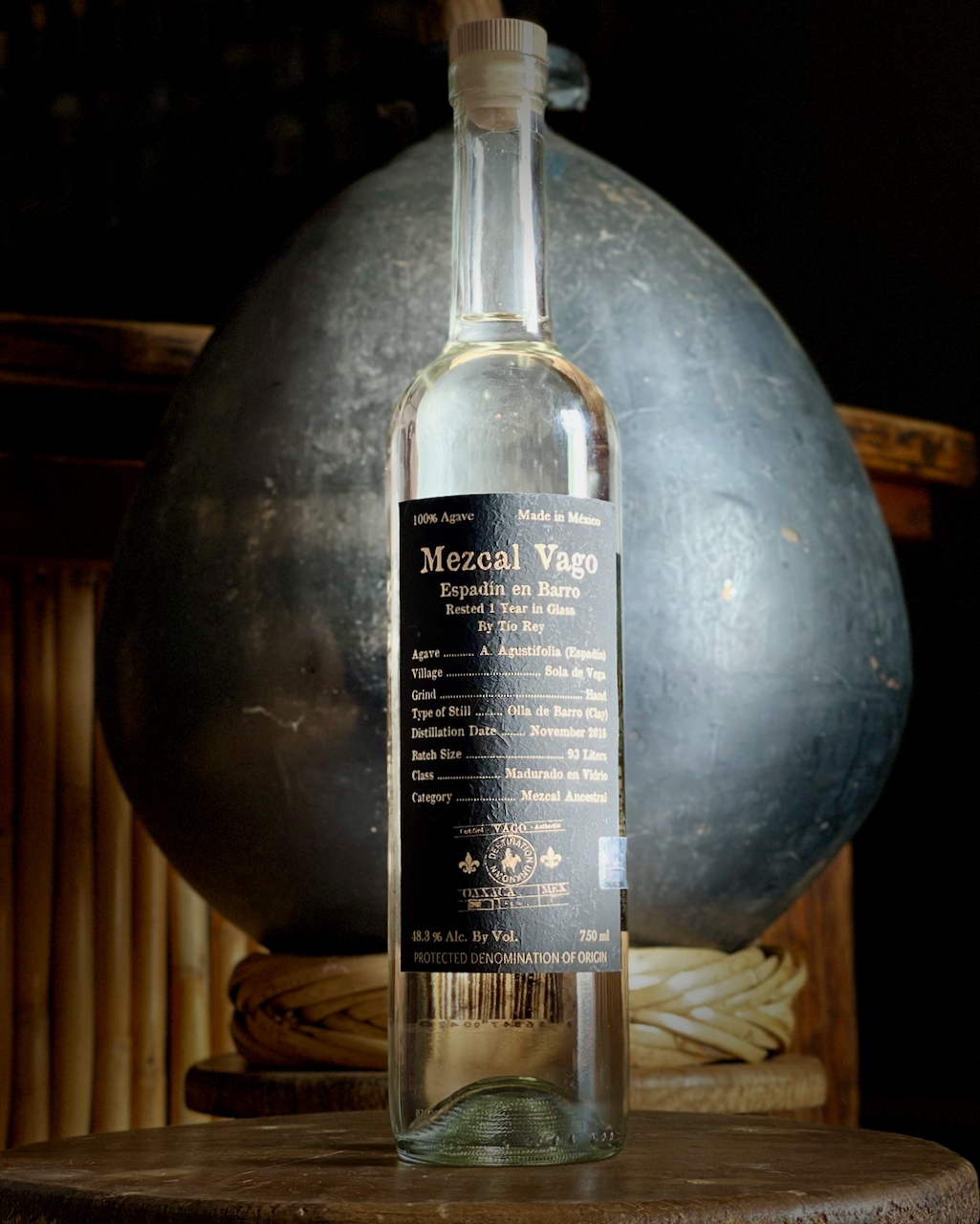Mezcal Vago Espadín
The Mezcal Vago Espadín is made by Aquilino García López at his palenque in Candelaria Yegolé, Oaxaca (16°29'41.36"N, 96°18'38.69"W).
Aquilino cultivates his Agave Espadín in the hills above his palenque, located on the border of the Central Valley and Sierra Sur regions of Oaxaca.

Espadín is the most prevalent agave type found in Oaxaca. Its ease of cultivation and high sugar content make it ideal for making Mezcal. The vast majority of mezcal is made from Espadín. Commercial mezcal that does not specify what kind of agave it is made from is most likely made from Agave Espadín.
Espadín is the genetic mother of the Blue Weber Agave used in Tequila production. Its Latin name is Agave angustifolia.
A mezcalero’s mezcal made from Agave Espadín tells a lot about that mezcalero’s style and craftsmanship. Because specific notes can’t be attributed to different agave types, the characteristics of a mezcal Espadín can be very indicative of the hand of the maker. Mezcal Vago is particularly proud of Aquilino’s Espadín and feel it expresses the style of his family heritage and home region.
Mezcal Vago’s Espadín has become a favorite amongst aficionados. It’s well-balanced smokiness and bright citrus flavors make it distinct. The lower elevation and rugged terrain of Yegolé contribute to the complexity of the mezcals from that region. The terroir shines through in this mezcal, and you really get a sense of place when tasting it. Every batch is slightly different, but ABV is usually around 50%. This mezcal is a magnificent sipping mezcal, yet has become a favorite ingredient in craft cocktails as well.
Producer: Aquilino García López.

Location: Candelaria Yegolé, Oaxaca

The still (palenque) is on Aquilino’s ranch where he lives full time. He and his father moved it to its current location 15 years ago. It has moved around from nearby locations over the years. He believes his family has been making Mezcal for at least five generations. Aquilino and his son Mateo do nearly all of the work themselves.
The fermentation vats are made of pine and hold up to 1000 liters. The cooked agave and water ferment from the natural airborne yeasts in the air. No additional ingredients are used to make the Mezcal other than agave and water.
Each batch ferments for around a week. This varies depending on the ambient temperature at the time of fermentation. Aquilino distills his fermented mash before all of the sugar has fermented. This is sooner than other Mescalero’s’ techniques. He uses six fermentation vats. Aquilino has an alembic copper still that has a 250-liter capacity. He makes all the separations (cuts) by smell and taste. All of Aquilino’s mezcals are twice distilled. Aquilino’s Mezcals have a definite style. Bright, clean and bold without too much smoke. They have less bottom end (tails) than other mezcal lines, due in part to his “narrow” cuts on the still. This really lets the subtle notes of the agave shine through on the front end of the palate. All of Aquilino’s mezcal goes through a simple sediment filtration through a tubular cellulose filter before bottling. The bottling is done by hand in Oaxaca City. The very light filtration is the only way the mezcal is affected between when it was made on the palenque and how it ends up in the bottle.






